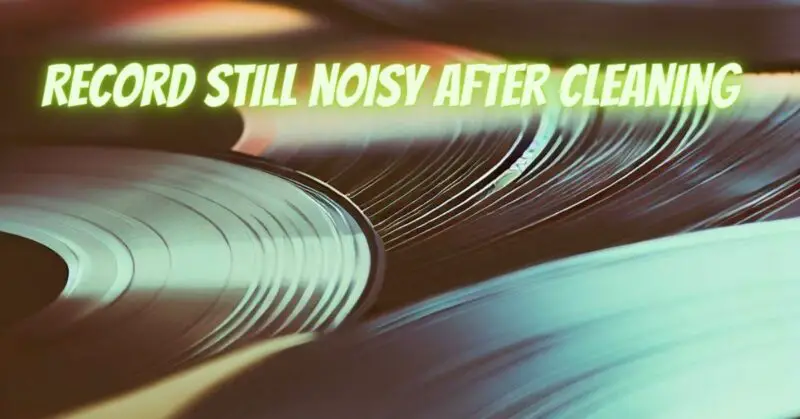Vinyl records hold a special place in the hearts of audiophiles and music enthusiasts, offering a tangible and nostalgic listening experience. However, the charm of vinyl can sometimes be overshadowed by the presence of unwanted noise, such as pops, crackles, and surface hiss. While cleaning your records is often the first step in addressing these issues, what should you do when cleaning fails to eliminate the noise? Let’s explore some possible reasons why your records may still be noisy after cleaning and what steps you can take to improve their sound quality.
Understanding Common Record Noise
Before diving into solutions, it’s essential to understand the common types of noise that can affect vinyl records:
- Surface Dirt and Grime: Dust, debris, and microscopic particles can accumulate on the surface of records, causing pops and crackles during playback.
- Static Electricity: Static electricity can attract dust and cause it to adhere to the surface of the record, leading to increased surface noise.
- Wear and Tear: Over time, records may develop groove wear, scratches, and other imperfections that can contribute to noise and distortion.
- Mold and Mildew: Improper storage in damp or humid environments can promote the growth of mold and mildew on records, leading to surface contamination and noise.
Reasons Cleaning May Not Help
While cleaning your records is an essential maintenance step, several factors can contribute to persistent noise even after cleaning:
- Deep Groove Contamination: Stubborn dirt and debris may become embedded deep within the grooves of the record, making it difficult to remove through standard cleaning methods.
- Static Buildup: Static electricity can attract dust and particles to the record surface even after cleaning, resulting in ongoing surface noise during playback.
- Physical Damage: Records with significant groove wear, scratches, or other damage may continue to produce noise despite cleaning efforts.
- Improper Cleaning Technique: Using the wrong cleaning solution or applying excessive pressure during cleaning can potentially damage the record surface and exacerbate noise issues.
Additional Steps to Improve Playback Quality
If cleaning alone doesn’t yield satisfactory results, consider the following additional steps to improve the playback quality of your records:
- Advanced Cleaning Methods: Explore alternative cleaning methods, such as ultrasonic record cleaning machines or professional record cleaning services, which can provide deeper cleaning and removal of stubborn contaminants.
- Anti-Static Solutions: Use anti-static record brushes, cloths, or solutions to help neutralize static electricity and minimize dust attraction on the record surface.
- Playback Equipment Maintenance: Ensure that your turntable and cartridge are properly calibrated and maintained. Check for worn stylus tips or misaligned cartridges, as these issues can contribute to noise during playback.
- Digital Restoration: Consider digitizing your vinyl collection and using audio restoration software to clean up noise and imperfections digitally. While not a solution for purists, digital restoration can be effective in improving playback quality for heavily damaged records.
While cleaning is an essential part of vinyl record maintenance, it may not always be sufficient to eliminate persistent noise issues. Understanding the factors contributing to record noise and exploring alternative solutions can help improve the playback quality of your vinyl collection. Whether through advanced cleaning methods, anti-static solutions, equipment maintenance, or digital restoration, taking proactive steps can enhance your listening experience and breathe new life into your beloved vinyl records.

